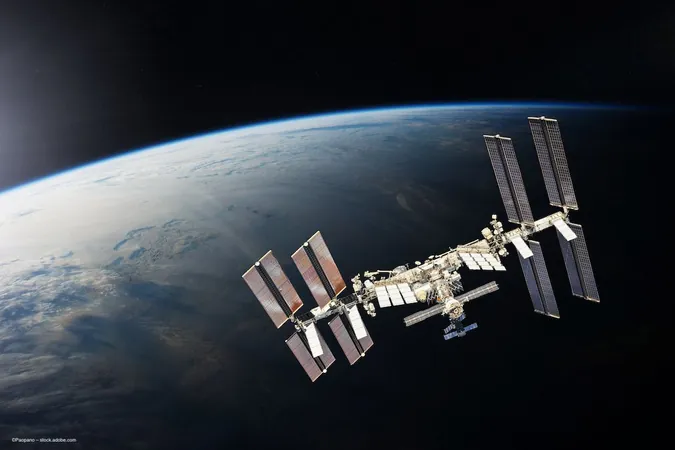
Revolutionizing Telemedicine: How Spaceflight Challenges Are Shaping Healthcare on Earth
2025-07-03
Author: Wei
In the vastness of space, a new frontier of telemedicine is being forged, and it promises to change healthcare delivery on our planet. Steven Laurie, PhD, a leading scientist at NASA's Johnson Space Center, recently shared groundbreaking insights at the Heidelberg 2025 International SPECTRALIS Symposium.
Laurie's presentation focused on how the rigors of long-duration space missions are sparking innovations in medical technology—particularly in eye care. Astronauts aboard the International Space Station (ISS) have been using advanced imaging tools like the Heidelberg Spectralis OCT2 to monitor eye health, revealing alarming changes in their retina and optic nerve structure.
This isn't just about space travel; Laurie emphasized the potential impact of these technologies for people in the most remote and underserved regions on Earth.
**Key Takeaways for Astronaut Health**
In his talk, Laurie discussed how NASA has adapted telemedicine practices over the last decade to ensure astronauts can receive vital eye care without direct supervision from Earth. He described how the Spectralis OCT2 is used to track serious conditions like optic disc edema, which affects a significant percentage of space travelers.
He noted that about 60% to 70% of crew members experience these ophthalmic changes during missions lasting around six months, underscoring the critical need for innovative telehealth solutions.
**Space-Age Solutions for Earthly Problems**
What sets NASA’s approach apart is its reliance on real-time video and audio communication between mission control and the ISS crew. Utilizing two-way audio, video feeds, and screen-sharing capabilities, astronauts receive detailed guidance on how to capture essential OCT images.
Importantly, these high-quality images can be sent back to Earth for expert review just hours after they are collected, demonstrating that even with vast distances, effective diagnosis is achievable.
**Translating Innovations to Earthbound Patients**
Laurie highlighted the broader implications of these advancements. As NASA pioneers autonomous medical imaging devices like the new Mini OCT, which operates independently and doesn’t rely on constant communication with experts, the possibilities expand.
This technology could empower patients in remote areas to access high-quality diagnostic imaging without the need for specialists on-site, radically transforming telemedicine and healthcare accessibility.
**The Future of Telemedicine**
As Laurie concluded, the innovations born from the challenges of spaceflight not only improve the health of astronauts but also pave the way for better healthcare delivery on Earth, particularly for those living in isolated environments. This fusion of space technology and medical care may soon redefine how we approach health crises, whether in orbit or on the underserved fringes of our planet.

 Brasil (PT)
Brasil (PT)
 Canada (EN)
Canada (EN)
 Chile (ES)
Chile (ES)
 Česko (CS)
Česko (CS)
 대한민국 (KO)
대한민국 (KO)
 España (ES)
España (ES)
 France (FR)
France (FR)
 Hong Kong (EN)
Hong Kong (EN)
 Italia (IT)
Italia (IT)
 日本 (JA)
日本 (JA)
 Magyarország (HU)
Magyarország (HU)
 Norge (NO)
Norge (NO)
 Polska (PL)
Polska (PL)
 Schweiz (DE)
Schweiz (DE)
 Singapore (EN)
Singapore (EN)
 Sverige (SV)
Sverige (SV)
 Suomi (FI)
Suomi (FI)
 Türkiye (TR)
Türkiye (TR)
 الإمارات العربية المتحدة (AR)
الإمارات العربية المتحدة (AR)